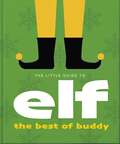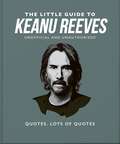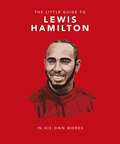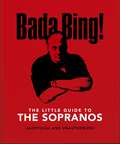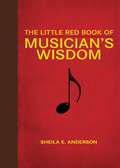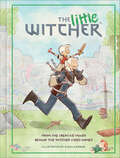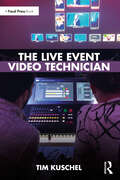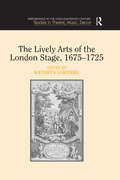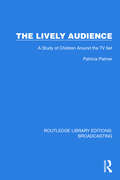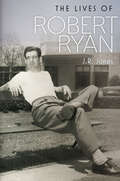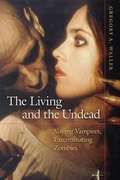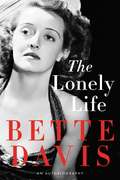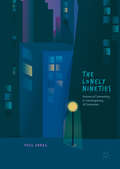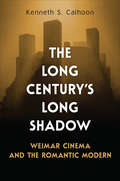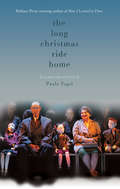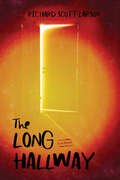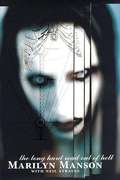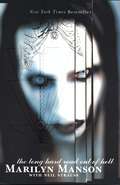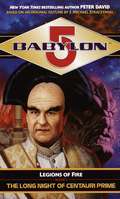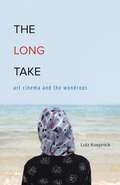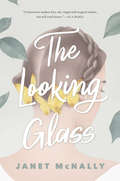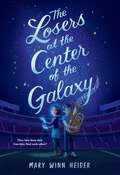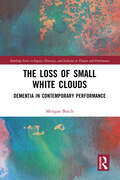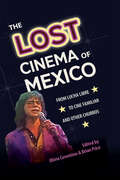- Table View
- List View
The Little Guide to Elf
by Orange Hippo!A modern Christmas classic, Elf burst onto cinema screens over 20 years ago and has been charming people ever since. In 2003, Buddy the Elf went on a journey to find his father, and ultimately help Santa save Christmas, and since then the world has gone Elf mad. There are only a few modern Christmas films that everyone agrees are instant classics, but Elf is definitely one. A wholesome and deeply funny film, it captures everything important about Christmas: family, acceptance, fun and - most importantly - Santa. Regularly cited as one of the best Christmas films of all time, for many people, Christmas hasn't started until they've watched Elf.Stuffed with more classic quotes, quips and wisecracks from Buddy, his human family and North Pole colleagues, as well as a cast of cynical New Yorkers whom Buddy befriends and with more treats than you'll find under the Christmas tree, the Little Book of Elf is the perfect gift for the Elf-mad member of your family, which, last time we looked, was everyone!"I just like to smile. Smiling's my favorite." Buddy."Why don't you just say it? I'm the worst toy maker in the world. I'm a cotton-headed ninny-muggins."Buddy, to Ming Ming."Then I traveled through the seven levels of the Candy Cane forest, past the sea of twirly-swirly gum drops, and then I walked through the Lincoln Tunnel."Buddy.44 per centThe percentage of British people* who re-watch Elf every single year, according to OnBuy study, 2020.* Britons will spend around 14 days of their lifetime re-watching Elf.
The Little Guide to Keanu Reeves: The Nicest Guy in Hollywood (The\little Book Of... Ser.)
by Orange Hippo!Why we're all crazy about Keanu.When even your name is beautiful (Keanu means "cool breeze over the mountains"), it's no surprise that Keanu Reeves was destined to become one of world's biggest and most enduring film stars. Bursting onto our screens in eighties in River's Edge and Bill and Ted's Excellent Adventure, his run of smash hits continued through the next decade with Point Break, Much Ado About Nothing, Speed, and his groundbreaking role as Neo in The Matrix. Then, in 2014, his sensational comeback in the John Wick films catapulted him right back to the top of the Hollywood A-list.No stranger to tragedy in his personal life - his baby was stillborn and his partner died in a car accident two years later - Keanu is as famous for his kindness, wisdom and philanthropy as he is for his film career. He has secretly donated large sums to children's hospitals, given generous gifts to crew members on set and made headlines for his kindness to fans. Join us in a celebration of the man widely known as "the Internet's boyfriend"."If you can make a woman laugh, you're seeing the most beautiful thing on God's earth." Keanu Reeves on womenBorn in Lebanon and raised in Australia, the USA and Canada, Reeves is of Chinese, English, Irish, Hawaiian and Portuguese descent. (But he's Canadian, OK?)
The Little Guide to Lewis Hamilton
by Orange Hippo!With seven world championships, 103 race wins, and 104 pole positions, Lewis Hamilton is the statistical GOAT of Formula One, and he stands alongside the likes of Michael Schumacher and Ayrton Senna as a legend of the sport. His legacy is set to be cemented further with his move to join Ferrari in 2025 - the ultimate pairing of the most successful team ever and most successful driver. ever The move is not just one of the biggest in F1 history, but one of the biggest transfers in the history of sport. With the news making headlines around the world, and causing Ferrari's stock value to jump more than 10%, Hamilton's influence can't be doubted.Hamilton's reach extends far beyond F1 too, with his famous sense of style, investments, music, and philanthropism. This little guide to the legendary driver is packed full of quotes, facts, and trivia, including quotes from the man himself and other legends of the sport. Whether you're a die-hard fan or a casual F1 follower, this is a must-read. Lights out and away we go.
The Little Guide to The Sopranos: The only ones you can depend on (The\little Book Of... Ser.)
by Orange Hippo!"Buy land, 'cause God ain't making any more of it."When The Sopranos aired in 1999, it was at the forefront what is now known as the Golden Age of TV. Revolving around a suburban New Jersey gangster and his attempts to juggle work and home life, the show redefined the crime drama genre and, instead of stereotyped mobsters, gave us a sensitive portrayal of anti-heroes and deeply flawed characters we somehow find ourselves rooting for.Each episode looks like a movie, and the plots are dark and twisting, dealing with complex themes of depression, suicide, family strife and betrayal, and yet it never forgets to find the lighter moments in amongst it all, streaked through as it is with raucous humour and some truly unforgettable one-liners.This little book gives fans of the show a chance to relive the magic, to remember some of its most indelible moments and pithy exchanges, all while learning some lesser-known trivia along the way. If nothing else, it'll give them a break from wondering about what really happened at that diner in the final scene..."You don't shit where you eat. And you especially don't shit where I eat." Tony SopranoCreator David Chase only directed two episodes of the show: the first and the last.
The Little Guide to The Sopranos: The only ones you can depend on (The\little Book Of... Ser.)
by Orange Hippo!"Buy land, 'cause God ain't making any more of it."When The Sopranos aired in 1999, it was at the forefront what is now known as the Golden Age of TV. Revolving around a suburban New Jersey gangster and his attempts to juggle work and home life, the show redefined the crime drama genre and, instead of stereotyped mobsters, gave us a sensitive portrayal of anti-heroes and deeply flawed characters we somehow find ourselves rooting for.Each episode looks like a movie, and the plots are dark and twisting, dealing with complex themes of depression, suicide, family strife and betrayal, and yet it never forgets to find the lighter moments in amongst it all, streaked through as it is with raucous humour and some truly unforgettable one-liners.This little book gives fans of the show a chance to relive the magic, to remember some of its most indelible moments and pithy exchanges, all while learning some lesser-known trivia along the way. If nothing else, it'll give them a break from wondering about what really happened at that diner in the final scene..."You don't shit where you eat. And you especially don't shit where I eat." Tony SopranoCreator David Chase only directed two episodes of the show: the first and the last.
The Little Red Book of Musician's Wisdom (Little Red Books)
by Sheila E. AndersonCelebrating both the famous and the obscure from every genre of music--including classical, rock, Latin, country, blues, and hip-hop, The Little Red Book of Musician's Wisdom offers a touching anecdote or pithy line for every musical occasion. Musicians, critics, DJs, and industry onlookers provide illuminating commentary on a wealth of topics: Singing, rehearsing, and performing Success, fame, and fortune Failure and rejection Music critics and industry bigwigs Love, passion, and sex Aging and death Humor and wit Religion and spiritualityIndividual sections pay particular homage to the words of Ron Carter, T. S. Monk, The Beatles, and Benny Golson. Musicians, music lovers, and those who love hearing from the talented and famous will savor this collection of provocative, mischievous, and profound words from musical personalities of the past and present."Music is the divine way to tell beautiful, poetic things to the heart."--Pablo Casals"No two people on earth are alike, and it's got to be that way in music, or it isn't music."--Billie Holiday"Most of the times, once you're out of the limelight is when you want to be in it."--Tina Turner"The sign of a mature musician is knowing what not to play."--Dizzy Gillespie
The Little Witcher
by Bartosz Sztybor Alex Sutton Jacek Rembis Rafal Babraj Nadia Gasik Katarzyna Grzyb Sebastian Kalemba Katarzyna Krainska Lukasz Ludkowski Tomasz Matera Krzysztof Muciak Milena Zajac Marcin ZwierzchowskiPutting a Witcher twist on family life, this delightful collection of comics features Geralt of Rivia as your average monster-slaying dad, trying to raise young Ciri to be a good kid while teaching her all about life as a witcher—a perfect gift for parents and The Witcher fans of all ages.Young Ciri's extensive training at Kaer Morhen, the witchers' stronghold, includes everything she needs to learn to survive the many threats in her world . . . as well as all the antics and fun of a little girl bonding with her adoptive dad and family.With help from Geralt and Ciri's closest companions—including the motherly magic of Yennefer of Vengerberg and the wisdom of uncle Vesemir—these adorable tales of a non-traditional family will make you laugh, make you sigh, and make you realize that raising a Little Witcher is not that different from raising any other kid. Sure, bedtime stories might include warnings of monsters who fart when surprised, and Geralt might invoke the Witcher Code to get Ciri to brush her teeth or clean her room, but even the formidable White Wolf knows to surrender when it comes to bedtime battles or Afternoon Tea with the toys.The Little Witcher is perfect for:The Witcher fans raising little Ciris of their ownReaders who believe in the power of chosen familiesBaby showers (don&’t forget Dad!)Father&’s Day or Mother&’s Day giftsPlayers looking for a light-hearted twist on their favorite gameFamilies who like cute, magical comicsThe Witcher fans looking to spend more time in Kaer Morhen
The Live Event Video Technician
by Tim KuschelThe Live Event Video Technician covers terms, format types, concepts, and technologies used in video production for corporate meetings, concerts, special events, and theatrical productions. The book begins by providing a history of the industry and an overview of important roles and functions therein. It then discusses various display technologies such as LED walls and video projection, as well as video systems for converting and switching of various types of sources. Presenting the cornerstone formats, connectors, and methodologies of visual technology, this book offers a strong foundation to help readers navigate this ever-changing field. Written in an accessible tone, the book clarifies jargon and is an overarching source of knowledge for the role of the video technician, for which there has previously been little formal training. The Live Event Video Technician provides a wealth of practical information for students of media and communications courses, readers with a novice or entry-level understanding of video and AV production, and anyone with an interest in working as technical personnel in live event production.
The Lively Arts of the London Stage, 1675–1725 (Performance in the Long Eighteenth Century: Studies in Theatre, Music, Dance)
by Kathryn LowerreUnlike collections of essays which focus on a single century or whose authors are drawn from a single discipline, this collection reflects the myriad performance options available to London audiences, offering readers a composite portrait of the music, drama, and dance productions that characterized this rich period. Just as the performing arts were deeply interrelated, the essays presented here, by scholars from a range of fields, engage in dialogue with others in the volume. The opening section examines a famous series of 1701 performances based on the competition between composers to set William Congreve's masque The Judgment of Paris to music. The essays in the central section (the 'mainpiece') showcase performers and productions on the London stage from a variety of perspectives, including English 'tastes' in art and music, the use of dance, the depiction of madness and masculinity in both spoken and musical performances, and genres and modes in the context of contemporary criticism and theatrical practice. A brief afterpiece looks at comic pieces in relation to satire, parody and homage. By bringing together work by scholars of music, dance, and drama, this cross-disciplinary collection illuminates the interconnecting strands that shaped a vibrant theatrical world.
The Lively Audience: A Study of Children Around the TV Set (Routledge Library Editions: Broadcasting #25)
by Patricia PalmerThe Lively Audience (1986) studies television from the children’s own point of view. Contrary to most prevailing opinion, it contends that television has much to teach children, and that their relationship with the medium is not one of passive dependency after all. Research shows that what children gain from television depends very much on the child’s age and social experience, and that children ‘see’ television differently from adults. This book examines this issue, and gives us a different understanding of the child audience and the impact of their television viewing.
The Lives of Robert Ryan (Wesleyan Film Ser.)
by J R JonesAn &“engrossing new biography&” of the actor famed for his menacing onscreen persona—and his offscreen work for peace and civil rights (Film Quarterly). The Lives of Robert Ryan is an in-depth look at the gifted, complex, intensely private man Martin Scorsese called &“one of the greatest actors in the history of American film.&” The son of a Chicago construction executive with strong ties to the Democratic machine, Ryan became a star after World War II on the strength of his menacing performance as an anti-Semitic murderer in the film noir Crossfire. Over the next quarter century, he created a gallery of brooding, neurotic, and violent characters in such movies as Bad Day at Black Rock, Billy Budd, The Dirty Dozen, and The Wild Bunch. His riveting performances expose the darkest impulses of the American psyche during the Cold War. At the same time, Ryan&’s marriage to a liberal Quaker and his own conscience launched him into a tireless career of peace and civil rights activism that stood in direct contrast to his screen persona. Drawing on unpublished writings and revealing interviews, film critic J.R. Jones deftly explores the many contradictory facets of Robert Ryan&’s public and private lives, and how these lives intertwined in one of the most compelling actors of a generation. &“Engaging . . . Jones describes a complex man who grappled publicly with the world&’s demons and privately with his own, among them alcohol and depression.&” —Associated Press &“Jones has done a superb job . . . A masterly biography.&” —Library Journal Includes photographs
The Living and the Undead: Slaying Vampires, Exterminating Zombies
by Gregory A. WallerWith a legacy stretching back into legend and folklore, the vampire in all its guises haunts the film and fiction of the twentieth century and remains the most enduring of all the monstrous threats that roam the landscapes of horror. In The Living and the Undead, Gregory A. Waller shows why this creature continues to fascinate us and why every generation reshapes the story of the violent confrontation between the living and the undead to fit new times. Examining a broad range of novels, stories, plays, films, and made-for-television movies, Waller focuses upon a series of interrelated texts: Bram Stoker's Dracula (1897); several film adaptations of Stoker's novel; F. W. Murnau's Nosferatu, A Symphony of Horror (1922); Richard Matheson's I Am Legend (1954); Stephen King's 'Salem's Lot (1975); Werner Herzog's Nosferatu the Vampyre (1979); and George Romero's Night of the Living Dead (1968) and Dawn of the Dead (1979). All of these works, Waller argues, speak to our understanding and fear of evil and chaos, of desire and egotism, of slavish dependence and masterful control. This paperback edition of The Living and the Undead features a new preface in which Waller positions his analysis in relation to the explosion of vampire and zombie films, fiction, and criticism in the past twenty-five years.
The Lonely Life: An Autobiography
by Bette DavisOriginally published in 1962, The Lonely Life is legendary silver screen actress Bette Davis's lively and riveting account of her life, loves, and marriages--now in ebook for the first time, and updated with an afterword she wrote just before her death. As Davis says in the opening lines of her classic memoir: "I have always been driven by some distant music--a battle hymn, no doubt--for I have been at war from the beginning. I rode into the field with sword gleaming and standard flying. I was going to conquer the world." A bold, unapologetic book by a unique and formidable woman, The Lonely Life details the first fifty-plus years of Davis's life--her Yankee childhood, her rise to stardom in Hollywood, the birth of her beloved children, and the uncompromising choices she made along the way to succeed. The book was updated with new material in the 1980s, bringing the story up to the end of Davis's life--all the heartbreak, all the drama, and all the love she experienced at every stage of her extraordinary life. The Lonely Life proves conclusively that the legendary image of Bette Davis is not a fable but a marvelous reality.
The Lonely Nineties: Visions of Community in Contemporary US Television
by Paul ArrasThis book examines the most popular American television shows of the nineties—a decade at the last gasp of network television’s cultural dominance. At a time when American culture seemed increasingly fragmented, television still offered something close to a site of national consensus. The Lonely Nineties focuses on a different set of popular nineties television shows in each chapter and provides an in-depth reading of scenes, characters or episodes that articulate the overarching “ideology” of each series. It ultimately argues that television shows such as Seinfeld, Friends, Law & Order and The Simpsons helped to shape the ways Americans thought about themselves in relation to their friends, families, localities, and nation. It demonstrates how these shows engaged with a variety of problems in American civic life, responded to the social isolation of the age, and occasionally imagined improvements for community in America.
The Long Century’s Long Shadow: Weimar Cinema and the Romantic Modern (German and European Studies)
by Kenneth S. CalhoonThe Long Century’s Long Shadow approaches German Romanticism and Weimar cinema as continuous developments, enlisting both in a narrative of reciprocal illumination. The author investigates different moments and media as connected phenomena, situated at alternate ends of the "long nineteenth century" but joined by their mutual rejection of the neo-classical aesthetic standard of placid and weightless poise in numerous media, including film, painting, sculpture, prose, poetry, and dance. Connecting Weimar filmmaking to Romantic thought and practice, Kenneth S. Calhoon offers a non-technological, aesthetic genealogy of cinema. He focuses on well-known literary and artistic works, including films such as Nosferatu, Metropolis, Frankenstein, and Fantasia; the writings of Conrad, Kafka, Goethe, and Novalis; and the paintings of Caspar David Friedrich, one of the leading artists of German Romanticism. With an eye to the modernism of which Weimar filmmaking was a part, The Long Century’s Long Shadow employs the Romantic landscape in poetry and painting as a mirror in which to regard cinema.
The Long Christmas Ride Home
by Paula Vogel"Brilliant . . . even more ambitious than Vogel's How I Learned to Drive . . . it covers more ground and is bolder in its storytelling. Vogel's language is at its most poetic, eloquent and elegiac. In fact, its vivid imagery rivals the prose style of any great American short story writer. The play sounds like it might have been adapted from a beautiful, undiscovered novella."--New Haven Register"One of the most absorbing evenings of theatre to come along in some time."--VarietyPast and present collide on a snowy Christmas Eve for a troubled family of five. Humorous and heart-wrenching, this beautifully written play proves that magic can be found in the simplest breaths of life. Combining the elements of No theatre and Bunraku with contemporary Western sensibilities, Vogel's Ride is a mesmerizing homage to the works of Thornton Wilder, including Our Town. A moving and memorable study of the American family careening near the edge of oblivion.Paula Vogel's plays include The Baltimore Waltz, Mineola Twins, Hot 'n' Throbbing, Desdemona, And Baby Makes Seven, among others. Ms. Vogel will be the resident playwright during the Signature Theatre's 2004-05 season dedicated to her works. She has taught at Brown University in the MFA playwriting program since 1985.
The Long Hallway (Living Out: Gay and Lesbian Autobiog)
by Richard Scott LarsonGrowing up queer, closeted, and afraid, Richard Scott Larson found expression for his interior life in horror films, especially John Carpenter’s 1978 classic, Halloween. He developed an intense childhood identification with Michael Myers, Carpenter’s inscrutable masked villain, as well as Michael’s potential victims. In The Long Hallway, Larson scrutinizes this identification, meditating on horror as a metaphor for the torments of the closet. Larson was only nine years old when he recognized something of his own experience in how Michael Myers hid his true face from the world. This spark of recognition ignited his imagination while he searched for clues to what the future might hold for boys like him, all the while being made to understand his nascent sexuality as deviant and punishable. Like in the movies, his superficially safe suburban childhood was in fact filled with threat: a classmate’s murder, his father’s alcoholism and death, and his own sexual assault by a much older man. The figurative mask Larson learned to wear could not contain his yearning to be seen and desired. In the aftermath of this violence, his boyhood self came to believe that fear and desire would be forever intertwined. This lyrical memoir expresses a boy’s search for identity while navigating the darkness and isolation of a deeply private inner world. With introspection and tenderness, Larson reflects on how little we understand in the moment about the experiences that mark us forever.
The Long Hard Road Out of Hell
by Marilyn MansonThis book is an autobiography of America's most controversial celebrity icon, Marilyn Manson.
The Long Hard Road Out of Hell
by Neil Strauss Marilyn MansonWhen this best-selling autobiography was originally released, readers were shocked: The Long Hard Road Out of Hell was the darkest, funniest, most controversial, and best-selling rock book of its time-and it became the template, both visually and narratively, for almost every rock book since. Marilyn Manson is not just a music icon, it turned out, but one of the best storytellers of his generation. Written with bestselling author Neil Strauss, beautifully designed with dozens of exclusive photographs, and modeled on Dante's Inferno, this edition of The Long Hard Road Out of Hell features a bonus chapter not in the hardcover. In the shocking and candid memoir, Manson takes readers from backstage to emergency rooms to jail cells, from the pit of despair to the top of the charts, and recounts his metamorphosis from a frightened Christian schoolboy into the most feared and revered music superstar in the country. Along the way, you'll hear what happens to fans-and celebrities-who dare to venture backstage with the one of the world's most dangerous rock stars. In the words of Elle magazine, the book "makes Madonna's infamous Sex seem downright wholesome in comparison."
The Long Night of Centauri Prime (Babylon 5: Legions of Fire, Book 1)
by Peter DavidThe Shadows have gone, but there minions the evil drakh, remain. And, they find a home on Centauri Prime, and a useful puppet in newly crowned Emperror Londo Molari.
The Long Take: Art Cinema and the Wondrous
by Lutz KoepnickIn The Long Take, Lutz Koepnick posits extended shot durations as a powerful medium for exploring different modes of perception and attention in our fast-paced world of mediated stimulations. Grounding his inquiry in the long takes of international filmmakers such as Béla Tarr, Tsai Ming-liang, Abbas Kiarostami, Apichatpong Weerasethakul, and Michael Haneke, Koepnick reveals how their films evoke wondrous experiences of surprise, disruption, enchantment, and reorientation. He proceeds to show how the long take has come to thrive in diverse artistic practices across different media platforms: from the work of photographer Hiroshi Sugimoto to the screen-based installations of Sophie Calle and Tacita Dean, from experimental work by Francis Alÿs and Janet Cardiff to durational images in contemporary video games.Deeply informed by film and media theory, yet written in a fluid and often poetic style, The Long Take goes far beyond recent writing about slow cinema. In Koepnick&’s account, the long take serves as a critical hallmark of international art cinema in the twenty-first century. It invites viewers to probe the aesthetics of moving images and to recalibrate their sense of time. Long takes unlock windows toward the new and unexpected amid the ever-mounting pressures of 24/7 self-management.
The Looking Glass
by Janet McNallyPerfect for fans of Emily Henry and Sarah Dessen, Janet McNally’s imaginative story of sisterhood shows that the fiercest of loves are often the ones that exist outside of happily-ever-afters.GIRLS IN TROUBLE. That’s what Sylvie Blake’s older sister Julia renamed their favorite fairy tale book, way back when they were just girls themselves. Now Julia has disappeared—and no one knows for sure if she wants to be away, or if she’s the one in trouble.Then a copy of their old storybook arrives with a mysterious list inside, and Sylvie begins to see signs of her sister, and their favorite fairy tales, everywhere she goes. With the help of her best friend’s enigmatic brother and his beat-up car, Sylvie sets out to follow the strange signs right to Julia and return to New York with her in tow. But trouble comes in lots of forms—and Sylvie soon learns that the damsel in distress is often the only one who can save herself.
The Losers at the Center of the Galaxy
by Mary Winn HeiderA tuba player without a tuba and his jellyfish-imitating sister cope with their father's disappearance in this hilarious and moving novel by the author of The Mortification of Fovea Munson. When Lenny Volpe, former quarterback of the worst professional football team in the nation, leaves his family and disappears, the Chicago Horribles win their first game in a long time. Fans are thrilled. The world seems to go back to normal. Except for the Volpe kids.Winston throws himself into playing the tuba, and Louise starts secret experiments to find a cure for brain injuries, and they're each fine, just fine, coping in their own way. That is, until the investigation of some eccentric teacher behavior and the discovery of a real live bear paraded as the Horribles' new mascot make it clear that things are very much Not Fine. The siblings may just need each other, after all.
The Loss of Small White Clouds: Dementia in Contemporary Performance (Routledge Series in Equity, Diversity, and Inclusion in Theatre and Performance)
by Morgan BatchThis volume seeks to instigate a discussion about dementia in theatre. The discussions in this book borrow from the literature on dementia’s representation in other artforms, while reflecting on theatre’s unique capacity to incorporate multiple artforms in a live context (hypermediacy). The author examines constructions of diegesis and the use of various performance tools, including physical theatre, puppetry, and postdramatic performance. She discusses stage representations of interior experiences of dementia; selfhood in dementia; the demarcation of those with dementia from those without; endings, erasure, and the pursuit of catharsis; placelessness and disruptions of traditional dramatic constructions of time; and ultimately, performances creatively led by people with dementia. The book traces patterns of narrativisation on the stage—including common dramaturgical forms, settings, and character relationships—as well as examples that transcend mainstream representation. This book is important reading for theatre and performance students, scholars, and practitioners, as well as cultural studies writers engaged in research about narratives of dementia.
The Lost Cinema of Mexico: From Lucha Libre to Cine Familiar and Other Churros (Reframing Media, Technology, and Culture in Latin/o America)
by Olivia Cosentino and Brian PriceThe Lost Cinema of Mexico is the first volume to challenge the dismissal of Mexican filmmaking during the 1960s through 1980s, an era long considered a low-budget departure from the artistic quality and international acclaim of the nation’s earlier Golden Age. This pivotal collection examines the critical implications of discovering, uncovering, and recovering forgotten or ignored films.This largely unexamined era of film reveals shifts in Mexican culture, economics, and societal norms as state-sponsored revolutionary nationalism faltered. During this time, movies were widely embraced by the public as a way to make sense of the rapidly changing realities and values connected to Mexico’s modernization. These essays shine a light on many genres that thrived in these decades: rock churros, campy luchador movies, countercultural superocheros, Black melodramas, family films, and Chili Westerns.Redefining a time usually seen as a cinematic “crisis,” this volume offers a new model of the film auteur shaped by productive tension between highbrow aesthetics, industry shortages, and national audiences. It also traces connections from these Mexican films to Latinx, Latin American, and Hollywood cinema at large.A volume in the series Reframing Media, Technology, and Culture in Latin/o America, edited by Héctor Fernández L’Hoeste and Juan Carlos RodríguezPublication of this work made possible by a Sustaining the Humanities through the American Rescue Plan grant from the National Endowment for the Humanities.
